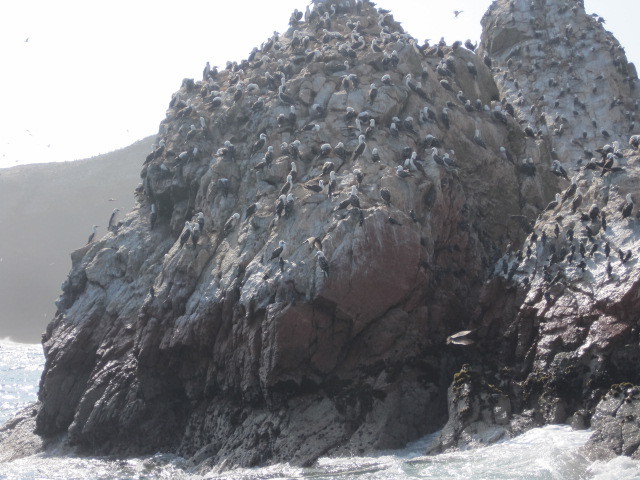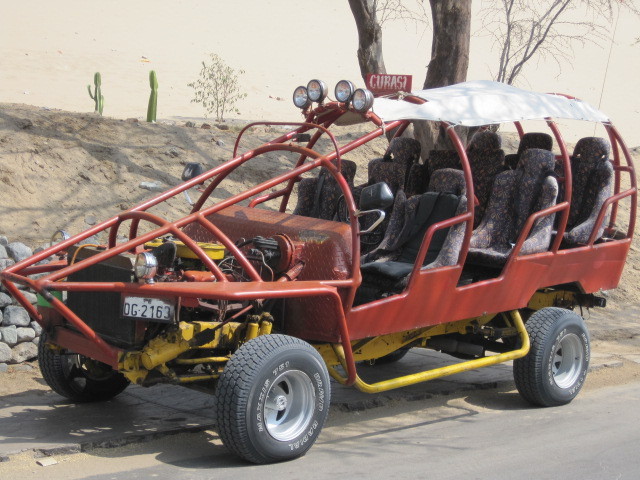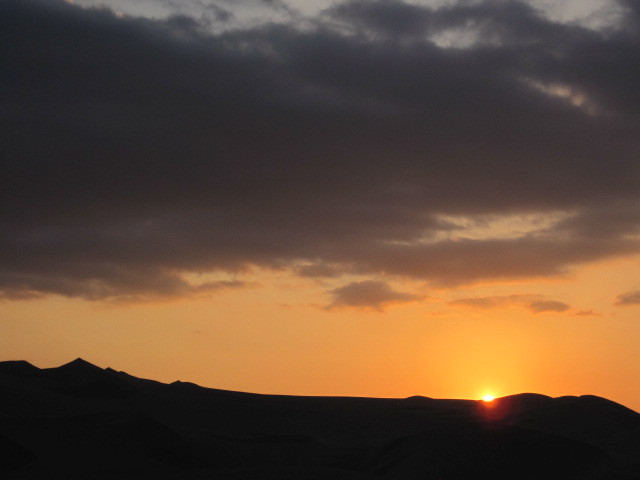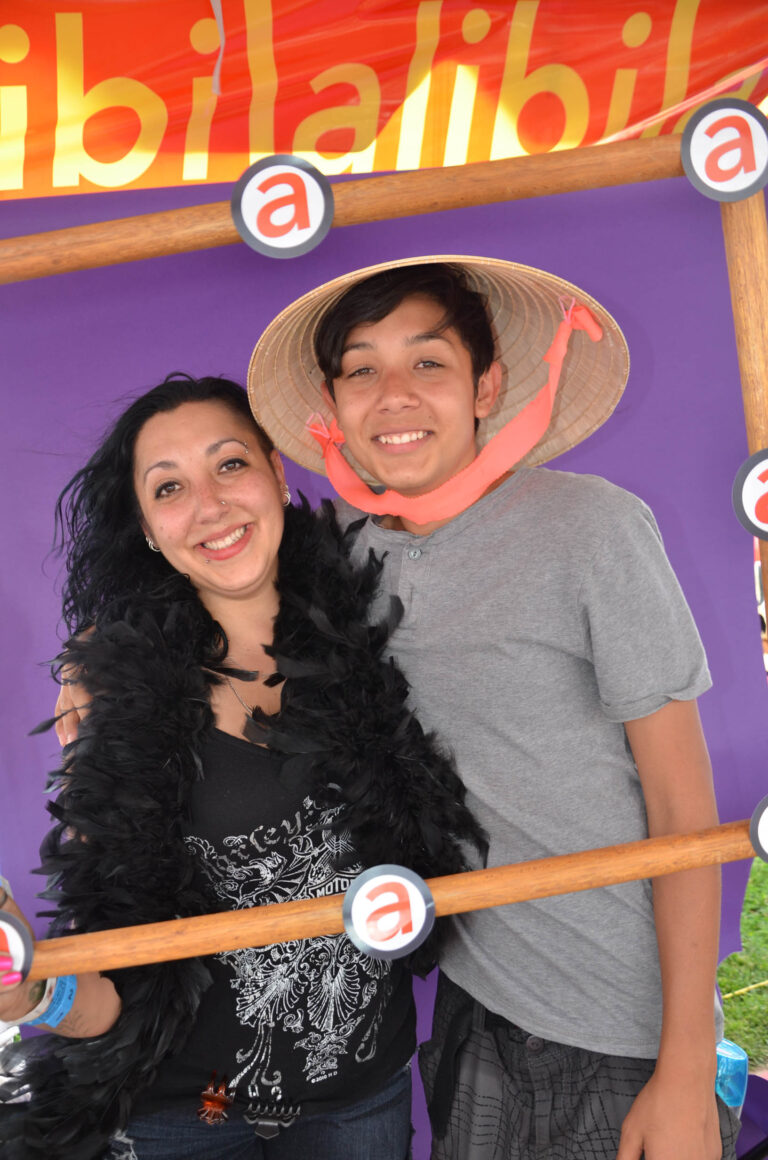Since we volunteers are encouraged to get to know Peru on our free weekends, I decided to go exploring on my own in the southern coastal area of Peru. My motivation to visit this area was primarily to see the famous Nasca Lines, which are considered one of the world’s greatest mysteries. They are giant geometric lines, shapes and figure drawings etched in the Pampa Colorado (Red Plain) in the town of Nasca, six hours south of Lima. Three hundred geoglyphs, 800 straight lines, and over 50 enormous outlines of animals including a spider, a monkey, a hummingbird, a pelican and a condor can be seen. These drawings are thought to date back to 400-600 A.D., and to this day, no one knows how they were made, or why. The interest in these enigmatic lines never seems to fade. National Geographic featured a story on the Nasca Lines just last month, in the March 2010 issue. As the lines are almost invisible from the ground, one must see them from a plane. I booked a flight for Sunday. The flights are usually scheduled very early in the morning, as that is when the sun’s angle is best for viewing las Lineas de Nasca. My trip started Friday with a bus ride to Paracas, 4 hours south of Lima. Paracas is a natural wildlife preserve, home to more than 1,800 species of plants and animals. Saturday morning I took a boat tour of the Islas Ballestas, three rugged islands that are home to over one million birds, as well as sea lions, humboldt penguins, seals and dolphins. Even more fascinating to me than the birds themselves was what is done with all of their poop. Bird poop, or guano, from the birds living on the Ballestas Islands became a huge business for Peru in the 19 th century, and it’s still a viable business today. Guano is rich in minerals and therefore makes a great fertilizer. The guano from these islands is harvested every 4-6 years by a group of workers who come for 3 months and live in shacks built on the islands for this purpose only. (No one lives on these islands—the terrain is much too rugged.) These men harvest the guano by hand, using shovels, not machines. The guano is then exported primarily to the U.S. and U.K. for use in fertilizing crops. Ten million tons of guano has been harvested from the Ballestas Islands in the past 30 years. The last harvest was in 2004. On the way to and from the islands, the boat passes Candelabra de Paracas, another mysterious etching on the side of a vertical dune, that may or may not be part of the Nasca Lines. I have attached a photo.From Paracas, I hopped on another bus to Ica, the city where Pisco, the beloved national spirit of Peru, is made. If someone offers you a Pisco beverage in Ica, you`d best drink up. Ica is also the principal wine region in Peru. The wine grapes grown here are used to make table wine as well as to make Pisco, which is the distilled product of wine grapes, similar to grappa. The annual grape harvest is in March, the beginning of autumn, and is celebrated with Fiesta de Vendimia, the wine harvest festival.Next, a short drive to nearby Huacachina, the sandboarding capital of the world. This sport is the desert-dweller version of snowboarding. Every year Europeans come to Huacachina in droves to practice for the international sand surfing competition held here, on dunes that reach over 300 feet in height. The only way to get to the top of the dunes to sandboard is in a dune buggy, which is an experience in and of itself, as the drivers are somewhat aggressive, which makes for many heart stopping moments along the way.There were six of us in my dune buggy, a mixed group from the U.S., Canada, Germany, Korea and Peru. I was the last one in and sat in the front row. We took off, and it was white-knuckle all the way. The only way I can describe this ride is that it is like a scary roller coaster, going up and down the largest and steepest sand dunes I’ve ever seen. The vertical drops were VERY steep, and the driver was going very FAST. I had nothing to hold on to, as I was in the front middle seat, and hoped I wouldn`t have to grab on to the Korean guy sitting next to me for dear life. Suddenly the Korean guy started pointing to me and yelling something, but the engine was really noisy, and everyone was screaming with delight, so I couldn´t hear him. Then he yelled something to the driver and pointed to me. The driver stopped abruptly, reached behind my head, and pulled down… a SEATBELT. This was not just a seatbelt, but a heavy duty harness that goes over one’s head and down the front of the body and attaches to the seat. Oops. In his haste to get going, the driver had forgotten to strap me in. As he fastened my harness and apologized profusely, there was a moment of silence as everyone realized I could have easily gone through the windshield. Oh wait, there IS no windshield in this vehicle! The excitement in Peru never ends. When I was securely fastened in, we resumed our breathtaking wheelies and everyone, especially me, resumed their screams of delight.Sandboarding was a thrill. After driving to the top of a dune, we all went down on sandboards, which look exactly like snowboards, except they are made of wood. We did this over and over again for two hours, with each hill getting progressively steeper. Then the driver stopped so we could all get out and watch the sunset from the top of the dunes. It was awesome … an experience I´ll never forget. By the end of the ride, we all had sand on our lips and in our teeth, and in our clothes, and I had to dump about a pound of sand out of each of my shoes. Still covered in sand, I boarded a bus to Nasca, to rest up for my flight at dawn.
Read the rest of the blogs in this series here.









